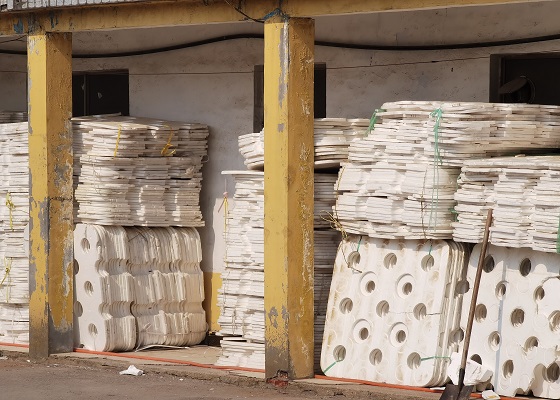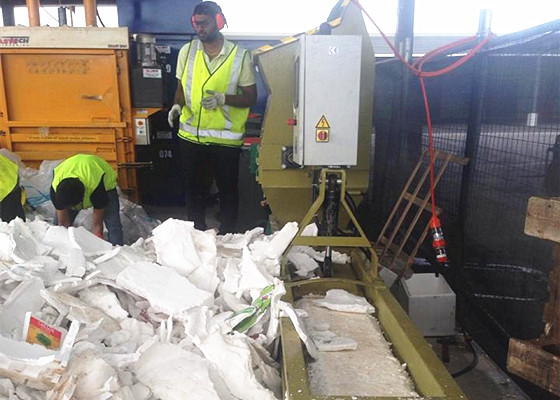More and more EPS is being recycled! People have also begun to dig out better ways to perform EPS recycling. It is worth advocating to use all available convenience methods and do our best to recycle EPS. At Fort Worden Battery Putnam, Port Townsend StyroCyclers volunteers haul 500 to 700 pounds of expanded polystyrene foam (EPS) from East Jefferson County to the curb, load OlyCAP trucks, and make monthly trips to the OlyCAP warehouse.
The loose EPS is packed in large bags (20 to 25 lbs each) and transferred to a 53ft Northwest Harvest tractor trailer, where the waste will be taken to Styro Recycle in Kent for recycling. OlyCAP in Port Townsend receives food delivery from Northwest Harvest. If it weren’t for our EPS snagging a free (and no-additional-carbon-footprint) ride, its tractor-trailer would have been returning to Auburn empty. This saves a part of the transportation cost.

So how will these waste EPS be handled after they are transported away? The report mentioned that the terminal recycling plant is using hot melt technology for recycling. In addition, there are many types of EPS recycling machines that can be recycled. GREENMAXJ will introduce two EPS compactors for you, one of which uses screw extrusion technology and the other uses hydraulic technology. The two EPS compactors do not need heating at all during the recycling process, and mainly adopt the method of gravity compression, which is more environmentally friendly and energy-saving.
EPS compactor A series uses screw extrusion to extrude the air in EPS foam, and the compression ratio can reach 50:1. EPS compactor H series uses hydraulic technology for compression, and the main recycling process is crushing and compression. However, the compression ratio is higher than that of the A series, which can reach 70:1.

When EPS is compressed, dense EPS blocs can be formed, and the volume becomes smaller, so that EPS foam can be transported as much as possible in a limited transportation space to achieve more efficient EPS recycling.